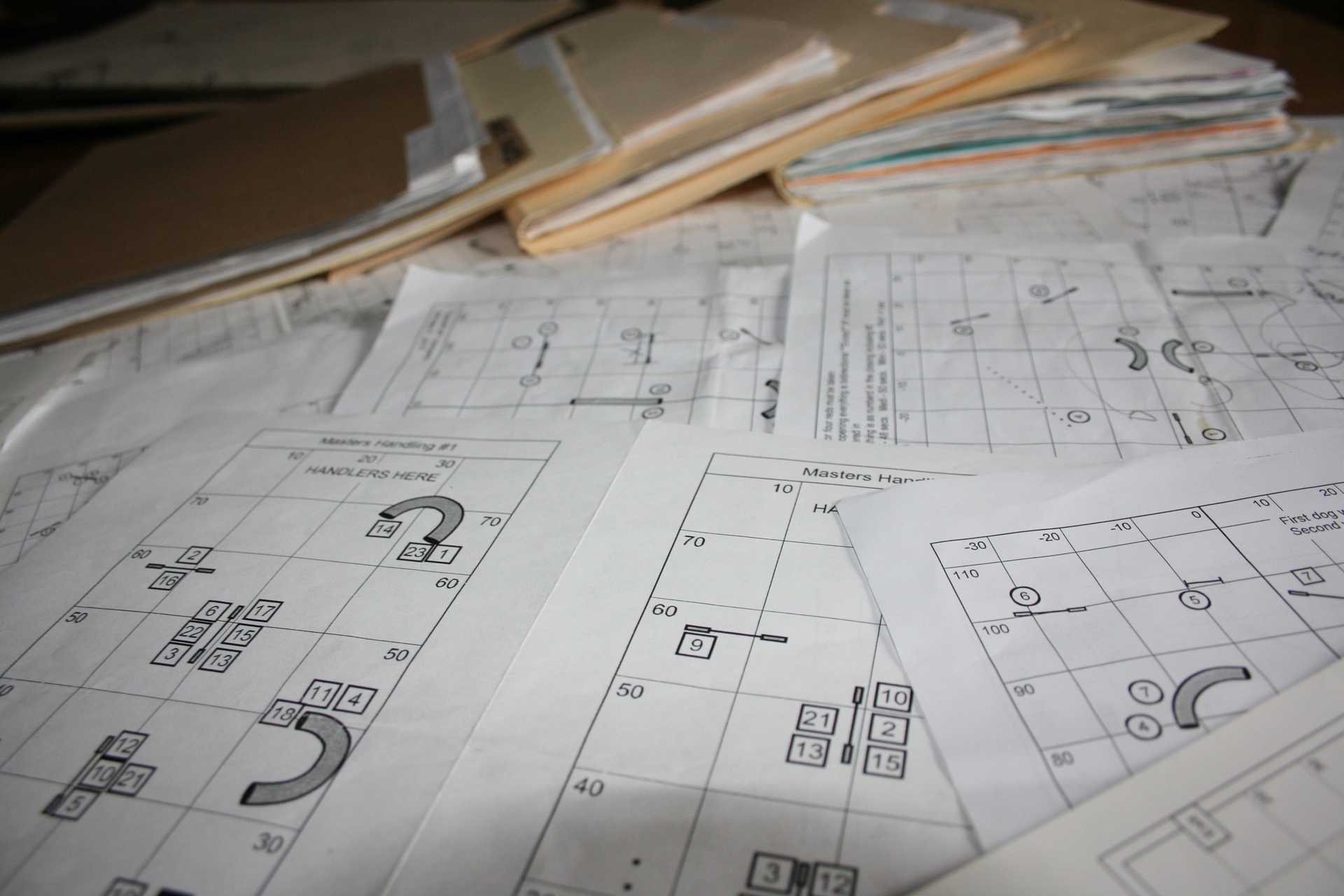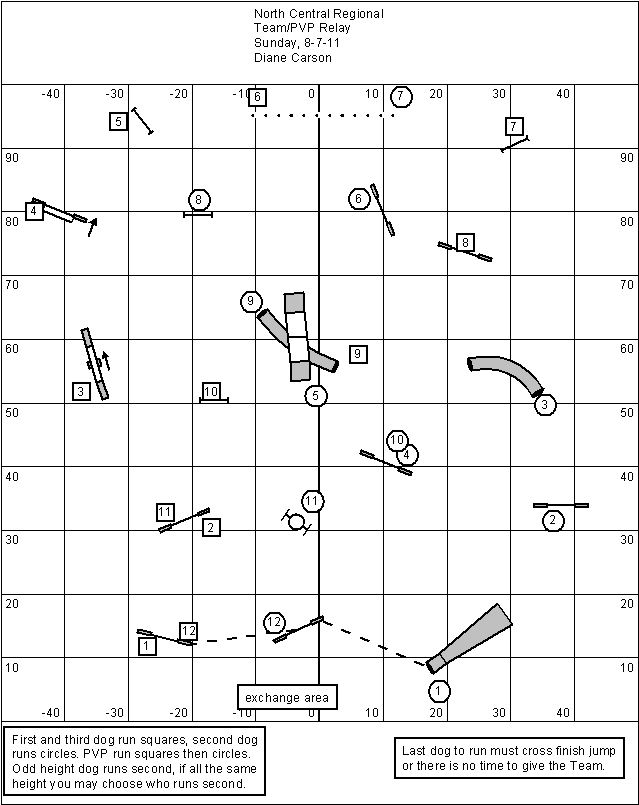Turning Dogs out of a Curved Tunnel - Diane Carson's NC Regional Relay Course - With Video
04 Oct 2011
Diane Carson’s Team Relay course at the 2011 USDAA North Central Regionals had a challenge that many teams couldn’t solve. It was all due to the tunnel under the A Frame that curved away from the direction the dog needed to turn to the next obstacle:
For Championship teams two of the three dogs on each relay team took the square numbered path. (Here are all the courses from the NC Regional.)
The tunnel is curved to the dog’s right so the dog will naturally continue on a right lead after they come out of the tunnel. So it was up to the handler to give the dog appropriate cues to turn their dog left out of the tunnel.
There were two main strategies for handling this section:
- Send the dog to the tunnel from the handler's left, run to the exit of the tunnel and beat the dog out of the tunnel. Then Scoop the dog on the handler's left and run through the closing.
- Using a Front, Blind or Rear Cross send the dog into the tunnel on the handler's right and call the dog while in the tunnel.
The first approach was used the least frequently. I’ve diagrammed the success and a couple failure modes below:
Here’s how this handling could fail:
- Not getting enough of a send to the tunnel and having the dog not take the tunnel. Or the handler pulling off the approach to the tunnel and the dog coming with them.
- More often the handler not beating the dog out of the tunnel, resulting in a (near) collision or the dog taking the off course jump.
- A few handlers did a Rear Cross on the exit of the tunnel but that made it more difficult to handle the offset jumps following the tunnel.
That being said I know a few handlers who were in the correct location on the exit of the tunnel and then this approach could not fail; the handler shows the dog the next obstacle.
Most handlers didn’t believe they could get to the exit of the tunnel in timely manner so variations on the second approach were the most common approach:
The key to turning dogs the correct direction out of straight tunnels is showing the dog which side of the tunnel you will be on when they enter the tunnel. I wrote an article about that ages ago. On the exit they will look for you on the side of the tunnel on which they saw you last. The lead the dog is on upon entering the tunnel also helps the dog naturally turn in the correct direction upon exit.
In this case the dog is on a right lead while navigating the tunnel and needs to change to a left lead immediately upon exit of the tunnel. That leaves the handler with their verbal cues (e.g. “Come”, “Left”, etc.) and showing motion on the left side of the dog before entering the tunnel.
Here are some handling options for this approach:
- The blue handler path has the handler Front Cross Learning the Front Cross - VideoFront Cross or more often Blind Cross at the blue X. This puts the handler on the dog's left all the way to the tunnel so the dog should look to their left upon exiting.
- The green handler path has the handler Rear Cross Learning the Rear CrossRear Cross or Blind Cross at the green X before the dog commits to the tunnel. Again trying to be on the dog's left prior to entering the tunnel.
In all approaches the handler gives a verbal while the dog is in the tunnel.
Some failure modes:
- Impatient Rear Crosses at the green X pushed the dogs away from the tunnel.
- Late Blind Crosses in either location could push the dog away or cause a collision.
- Some handler's called their dogs too early within the tunnel could have cued their dog to turn right also... (see my video below).
- Handlers pushing forward once the dog exited gave their dogs bad lines over jump 10 or pushed them past jump 10.
I had hoped to collect some videos from other competitors but only a couple sent them to me. So I didn’t get enough “data points” to confirm my suspicions that most of the E’s for the second handling method were due to the dog not seeing the handler on their left upon entering the tunnel.
So I setup this part of the course in my backyard and over a couple days tried a bunch of handling approaches and you can see my successes and failures:
I don’t know how many teams “E’d” on this half of the course. All I know is our team Q’d, and we certainly didn’t have the fastest dogs, but we ended up in 4th place on this course out of ~60 teams. So I think many teams had at least one E if not 2. So this is definitely the kind of challenge upon which many of us need(ed) to work!
I want to thank Diane for kindly allowing me to present her course here. I think this was a great and subtle challenge that had multiple handling and training solutions. Thanks Diane!
If you enjoyed this article won't you please:  Thanks!
Thanks!
Related Tags
Related Articles:
- Lisa Jarvis - Jumpers and Snooker Courses - With Video
- Dana Pike International Skills Class Course/Video
- WAO Team USA Practice Inspired Course - Video
- Dana Pike - Awesome Course with Video
- Backyard Course Based on Masters Pairs Jumping Sequence - Annotated Video
- Rafael Quiñones "Minions" Practice Course - Video



